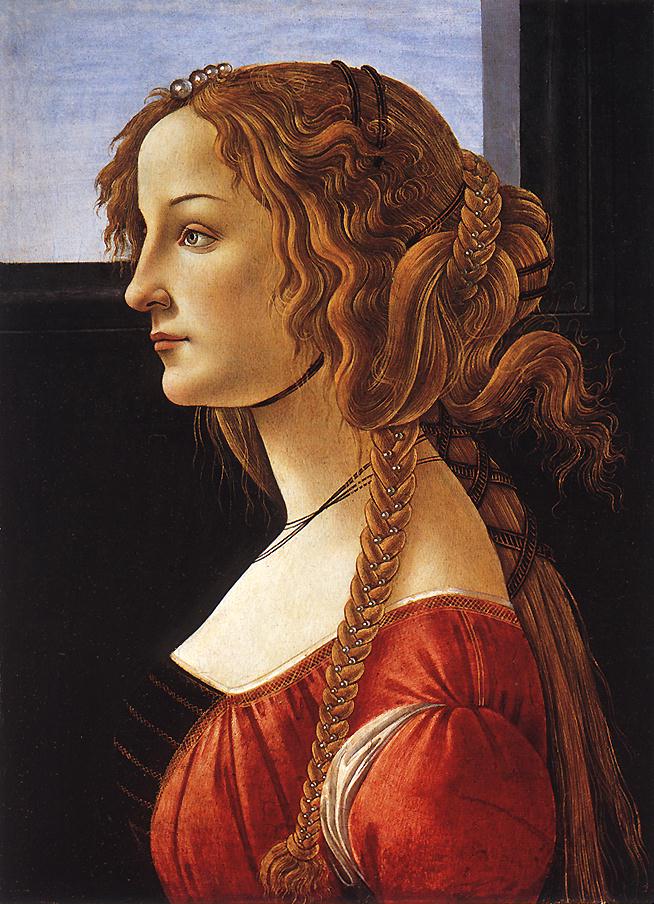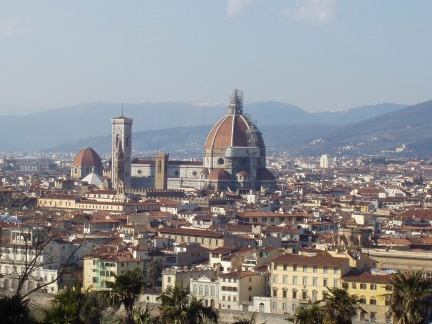
La Bella Simonetta was one of the greatest beauties of the ages. Born as Simonetta Cattaneo in 1453, the year that Constantinople fell, she married the Florentine nobleman Marco Vespucci, a scion of the family that later produced Amerigo Vespucci, the traveller who gave his name to a new continent.
Every noble in Florence fell in love with her, including the ruling brothers of the powerful Medici clan, Lorenzo and Giuliano. It was the time of the Renaissance, the flowering of Art and Humanism that fundamentally changed the character of Europe, and artists crowding into Florence under Medici patronage jostled to pay homage to the captivating noblewoman. Poems and paintings were created in her honour. One artist in particular, Sandro Botticelli, seemed particularly entranced.

He could not have her; she was beyond his reach. Instead, he poured his heart into his work, and in doing so he made la bella Simonetta immortal.
We do not know his reaction upon her untimely death from tuberculosis at the age of 22, when the entire city gathered in mourning behind the hearse carrying her to the Church of the Ognissanti. We do know that she lived on through the strokes and dabs of his paintbrush, as again and again Simonetta's demure face adorns his masterpieces. We best know her today as Venus, born from the waves, carried on a scallop shell toward the shore.
Botticelli survived her by 34 years and, at his own demise, requested - and was granted - permission to be buried at her feet. What he could not achieve in life, he achieved in the afterlife; he rests alongside his great passion.
It is a timeless story, the saga of the lovers cruelly kept apart by circumstance, only to be reunited in their eternal slumber. It occurs again and again through history, with the great canopied tomb of Heloise and Abelard standing staunchly in Pere Lachaise as its ultimate testament. It is a dichotomy that has struck the imagination, the connection between Love and Death, the deepest human instinct connecting with the deepest human fear. Stories and legends abound, reflecting its power. Iseult pines away, mourning for Tristan's exile. Romeo and Juliet resort to poison and dagger, Heathcliff screams to the moors for Cathy to return to him. All are allowed to slumber together in the afterlife, to achieve their own paradise before reaching an ethereal one.

Somewhere beneath the streets of Florence, the great centre of the Renaissance, the most beautiful and emotive city in Europe, Simonetta and Sandro lay hidden in their bliss... but they have never really departed. Walk across the Piazza della Signoria, past the statuary crowding the Loggia, past the Hercules fountain and the statue of David, past the tall and domineering tower of the Palazzo Vecchio, and see the queue outside the Uffizi Gallery. A perpetual line of people, waiting their turn to enter the venerable building and gaze at Venus, to return the serene stare of the woman who inspired some of the greatest imaginative works of Man, and whose story speaks softly and painfully to the deepest recesses of the human heart.

No comments:
Post a Comment